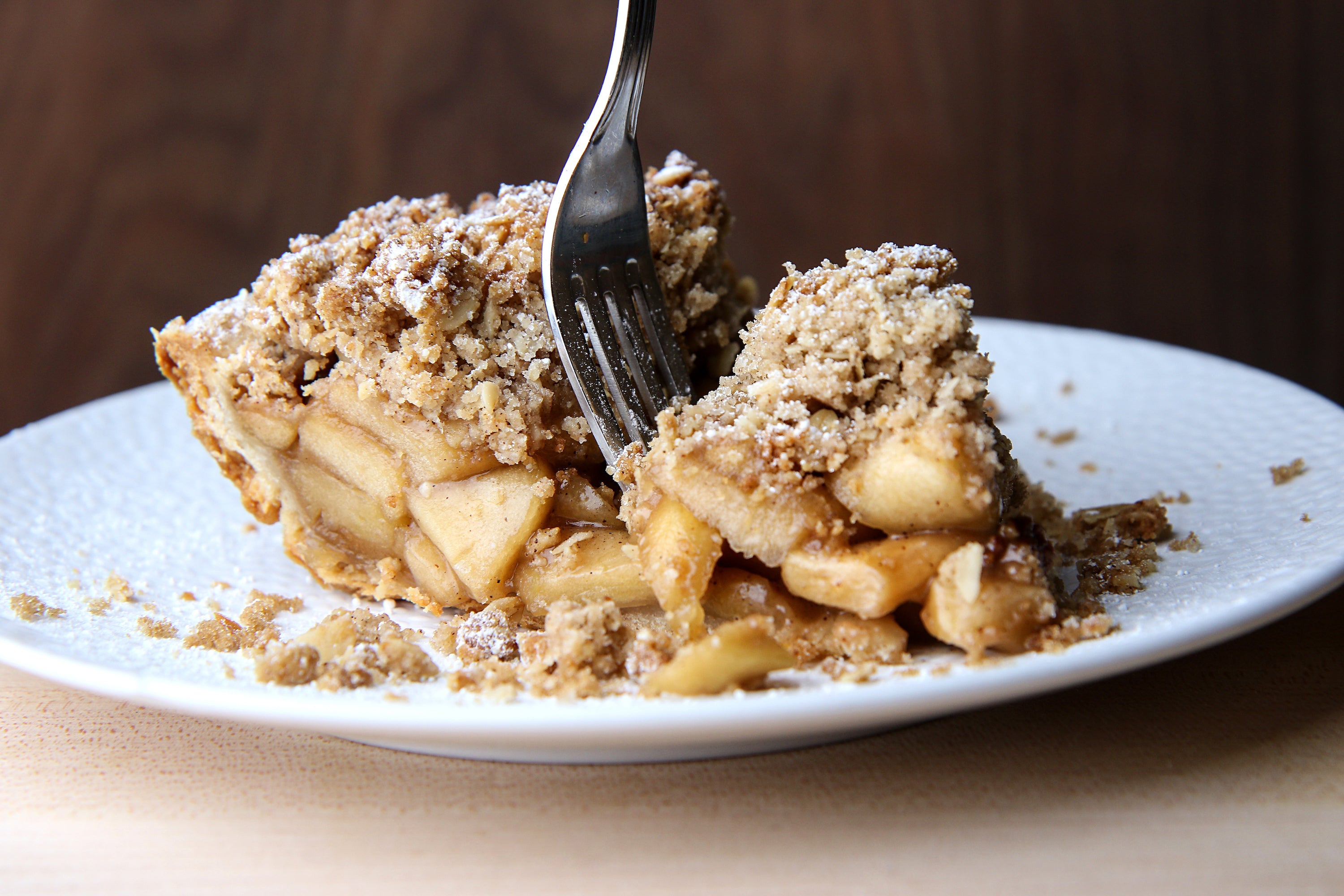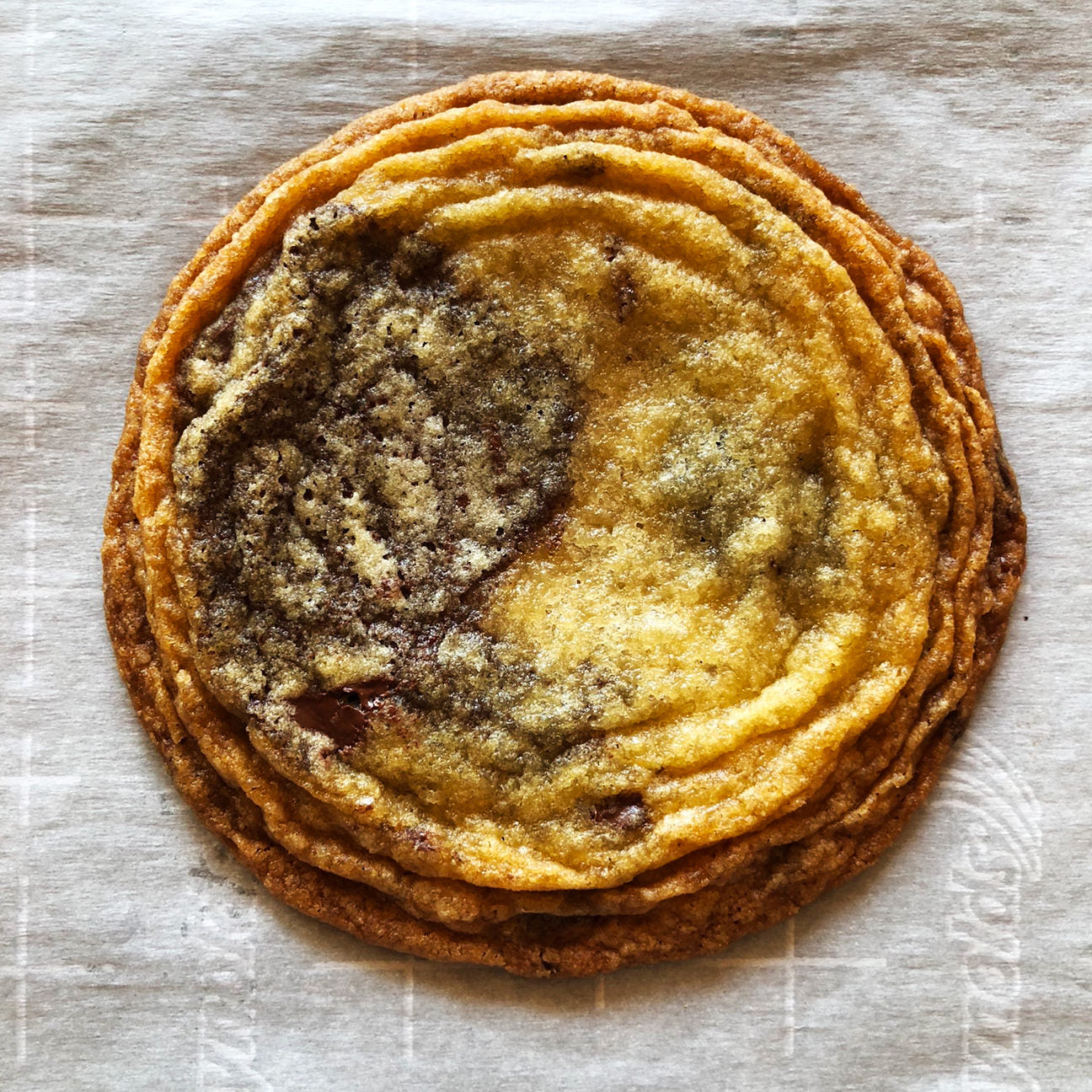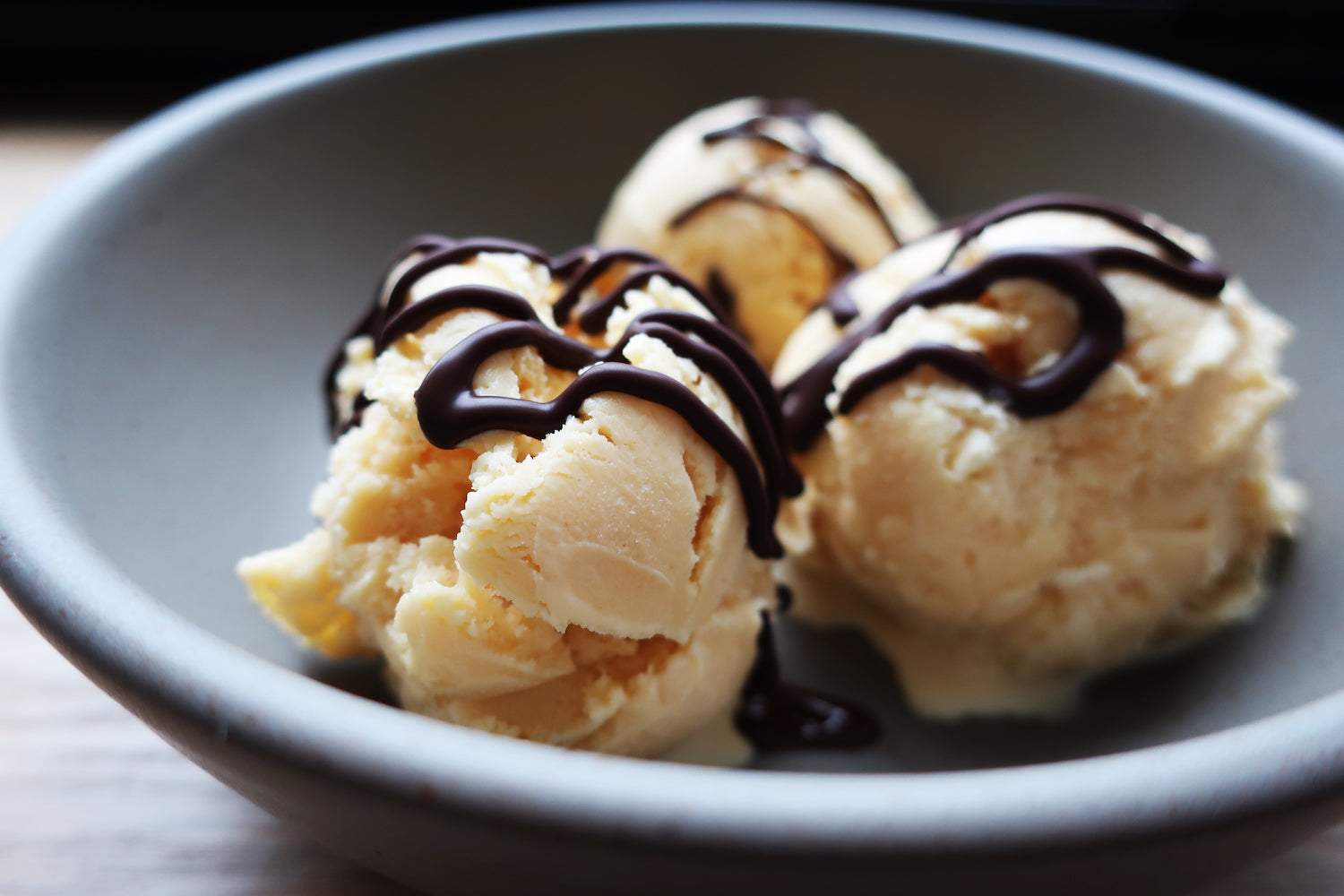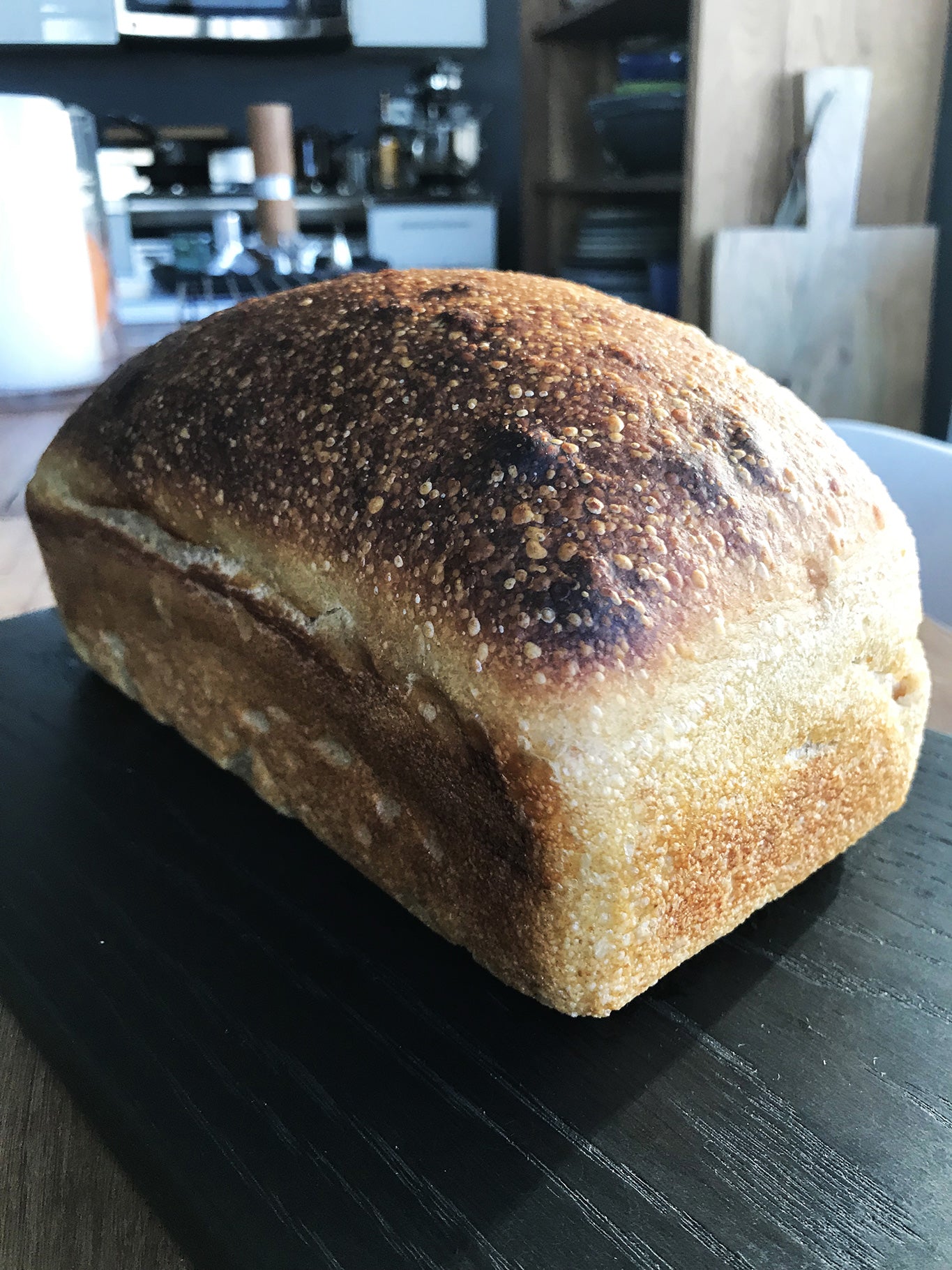Report from Italy: Pear and Chestnut Cake Recipe
After declaring an undying love for chestnuts in my last post, I couldn’t get the little nuggets of pure joy off my mind. During a trip to Italy last fall, I picked up a flyer for a chestnut festival in the small Piedmontese town of Cuneo. I had kept the flyer, thinking I might like to go some day. But as with so many things, once an idea burrows itself into your mind, it can be hard to let go of it, so within the space of a few frantic days of postponing work meetings and searching for flights and accommodations, that “some day” became “right now”.
Arriving in Cuneo on the first day of the festival, I was surprised to find a bustling town in place of the small village I had imagined. Also, the spectacular view of the Maritime Alps that was prominently displayed on all tourist information about Cuneo was nowhere to be seen. As I would soon discover, there’s a reason the grape variety native to this region is called Nebbiolo: nebbia is Italian for fog.
After dropping my bags at the B&B where I was staying, I immediately hit the town square to check out the festival. Most stalls were still getting set up, but since there weren’t that many people around yet, it was a great time to strike up conversations with various producers as I wound my way down the main drag through the market.
It turns out the Fiera nazionale del Marrone is about much more than chestnuts. In fact, it is a celebration of food from the very region that gave birth to the slow food movement. Here were small-scale producers from across the region, mostly Piemonte – the region of which Cuneo is a part – but also from the surrounding regions of Tuscany, Lombardy and Liguria. Never in my life have I seen (and tasted!) so many variations on mountain cheese, hazelnut torte and honey. Pastry shops and bakeries from every little village throughout the province of Cuneo, each with their own specialties on offer. Cheese mongers selling rich, ripe goat and sheep’s milk cheeses. Farmers peddling giant bundles of garlic (supposedly some of the best in the world) and leaks, and crates of apples and pears. Millers from Tuscany and Lombardy churning out freshly ground flour – corn, chestnut, farro and chickpea – on demand. Hazelnut growers, their tables laden with this year’s harvest and each with their take on a hazelnut-chocolate spread that puts Nutella to shame. A group of little old ladies from the Alta Valle Pesio (a mountain valley just outside Cuneo) selling apple fritters so fresh you had to wait for them to cool off before you could bite into them. A baker from Tuscany who sold only one thing: a fragrant, dark chestnut bread that somehow manages to distill the essence of chestnuts into a small, round one pound loaf. Dozens of microbreweries serving up everything from sweet concoctions to the deepest darkest brews, including several chestnut beers. Music on every street corner, often with dancing.
By nightfall the air started filling with the aroma of roasting chestnuts. Throughout the market there were banks of fire pits with giant pans of chestnuts expertly handled by men of all ages, an eager mob gathering every time a fresh batch was ready to be transferred to paper bags and handed out to the assembled crowd.
All in all, it was quite the spectacle, and well worth the trip from Denmark. Most people I spoke with couldn’t believe I’d ever heard of the festival, let alone come all the way from Copenhagen to see it. In fact, one elderly gentleman gifted me with two jars of his best chestnut cream because he was so astounded that someone would travel this far for chestnuts. Well, all I can say is that if you ever find yourself in Europe in October, make sure to put the Cuneo chestnut festival on your to-do list.
Back home in Copenhagen, I am on a diet (!), but not before baking cake with the fresh bag of chestnut flour I picked up in Cuneo. This recipe is courtesy of New York pastry chef Gina Depalma. It’s a fairly unassuming cake, but what it lacks in three-layer frosted grandeur, it amply makes up for in autumn flavor. Make sure to use the best pears you can find, preferably a firm variety that will hold up to being tossed in hot caramel. Serve the cake plain, with a dollop of fresh cream or a scoop of vanilla ice cream.
Pear and Chestnut Cake
Adapted from a recipe by Gina Depalma, former pastry chef at Babbo in New York. Check out their Dolci of the Month archive for more wonderful Italian desserts. (And by the by, we LOVE Gina’s book, Dolce Italiano).
Prune filling:
12 to 15 dried prunes, chopped (about ½ cup)
2 tbsp hot water
2 tbsp brandy
Place the chopped prunes and brandy in a small bowl. Add the boiling water and mix well. Set aside to allow the prunes to plump and soften.
Caramelized pears:
4 pears, medium sized
100 g (1/2 cup) sugar
1 tbsp butter
60 ml (1/4 cup) water
Peel, halve and core the pears. Set at large pan over medium high heat. When it has become very hot, sprinkle the sugar into the pan and let it melt without stirring. Keep a close eye on the sugar: once it turns a deep amber color, add the butter and give the pan a shake. Be careful, the caramel will bubble at this point, but settles down quickly. Add the water, shaking the pan, and finally the pears.
Bring the caramel back to a simmer and cook the pears for a few minutes, turning them often, until they are soft and caramelized. Remove from the heat and set aside to cool while you prepare the cake batter.
To assemble the cake:
150 g (1 cup plus 3 tbsp) all-purpose flour
35 g (1/3 cup plus 1 tbsp) chestnut flour
1 tsp baking powder
1 tsp baking soda
1/2 tsp salt
1 tsp ground ginger
2 tsp ground cinnamon
1/2 tsp ground nutmeg
140 g (1/2 cup plus 2 tbsp) butter, softened
50 g (1/4 cup) sugar
75 g (1/3 cup) packed light brown sugar
1 egg plus 1 egg yolk
1/2 vanilla bean, split down the middle and seeds scraped out
1 tsp brandy
1/3 cup milk
25 g (2 tbsp) turbinado sugar
Confectioner’s sugar for dusting
Preheat the oven to 325 degrees F. Line and butter a 8-inch round cake pan.
In the bowl of a stand mixer fitted with the paddle attachment, cream together the butter and the sugars until light and fluffy. Meanwhile, in a medium bowl, whisk together both flours, baking powder, baking soda, salt and all the spices. Add the egg and egg yolk to the butter mixture one at a time, beating until fully incorporated, then the brandy and vanilla. Scrape down the sides of the bowl and mix again.
Add the dry ingredients, alternating with the milk, in three additions, beginning and ending with the flour mixture. Beat the batter at low speed after each addition. Scrape down the sides of the bowl, add the prunes and mix again for a few seconds.
Pour the batter into the prepared cake pan and smooth the top. Place the caramelized pears in a circular pattern and sprinkle with turbinado sugar. Bake the cake for 40-45 minutes, or until a toothpick inserted in the center of the cake comes out clean. Transfer the cake to a wire rack to cool. To serve, place the cake on a serving plate and dust with confectioner’s sugar.
The cake can be stored, tightly covered, at room temperature for a few days. Serves 8-10.














